Effective maintenance planning is crucial for the success of any organization as it can minimize downtime, decrease expenses, and increase the lifespan of the equipment. This comprehensive guide offers valuable advice and tactics for optimizing equipment maintenance, designed specifically for professionals working in healthcare, agriculture, manufacturing, warehouse, distribution, or any other industry. It presents feasible solutions to typical maintenance challenges that may occur in any department, ranging from staffing to routine maintenance to resolving intricate issues, equipping organizations with the necessary resources to streamline their operations, boost productivity, and attain their objectives.
Table of Contents (top)
- Finding Qualified Maintenance Workers
- Retaining Employees
- Managing Various Types of Equipment
- Asset Lifecycle Management
- Preventive Maintenance Plan
- Spare Parts Inventory Management
- Maximizing Equipment Uptime & Reducing Downtime
- Maintaining Accurate Records
- Minimizing Equipment Damage
- Specialized Equipment
- Safety Management
- Streamlining Maintenance Management
Finding Qualified Maintenance Workers
(TOP)
 Finding qualified maintenance workers can be a daunting task for many industries due to several reasons.
Finding qualified maintenance workers can be a daunting task for many industries due to several reasons.
Skilled labor: There is a growing shortage of skilled tradespeople due to an aging workforce and fewer young people pursuing vocational training.
Competition: Industries are facing tough competition for skilled workers as they try to attract the best talent from a limited pool of candidates.
Specialized skills: Many maintenance jobs require specialized skills, experience, and certifications, making it challenging to find the right candidate.
Dwindling interest: Traditionally, equipment maintenance has been perceived as a blue-collar profession, one that many young people were discouraged from pursuing in favor of white-collar careers. As a result, the pool of skilled workers with mechanical aptitude has decreased.
These factors make finding qualified maintenance workers a challenging task for many industries.
Effective Strategies for Finding Maintenance Workers
The labor shortage can present various challenges to organizations, but there are several effective strategies that can help organizations tackle this issue. Some proven approaches to address this challenge include:
- Reducing employee turnover to retain current workers.
- Investing in additional training programs to expand the skills of your current workforce.
- Improving wages and benefits to attract and retain skilled maintenance workers.
- Offering referral bonuses to existing employees who refer skilled maintenance workers to your business.
- Offering signing bonuses or relocation packages to entice skilled workers from other regions or industries to join your company.
- Offering flexible work arrangements, such as part-time or remote work options, to attract workers who may have caregiving or other responsibilities outside of work.
- Increasing diversity by actively recruiting women and veterans into maintenance roles.
- Working with industry associations or trade groups to create career development pathways, apprenticeships, or other programs that help to grow and retain a skilled maintenance workforce.
- Conducting targeted marketing campaigns to showcase the benefits of a maintenance career to young people.
- Partner with local technical schools, community colleges, or workforce development programs to create customized training programs tailored to your business’s needs.
- Providing scholarship opportunities or funding for technical schools and training programs to attract skilled workers.
- Implementing a mentorship program for high school students to provide hands-on training and experience in your workplace.
- Offering internships to students who complete mentorship programs, potentially leading to permanent employment opportunities.
- Investing in technology and equipment that requires less maintenance and repair work, reduces the need for as many maintenance workers.
Retaining Employees
(TOP)
Retaining employees is crucial for the success of any business. High turnover rates can have a significant impact on the company’s overall productivity and profitability, especially when it comes to managing materials and completing projects on time. Here are some key points to consider regarding the challenges of retaining workers:
- Retaining workers can be just as challenging as finding them in today’s labor market.
- In the warehouse industry, turnover rates are much higher compared to other sectors, making it even more difficult to keep skilled employees on board.
- The cost of replacing an employee can be significant, from the hiring process to training and onboarding a new hire.
- Losing valuable employees not only affects the company’s productivity but can also create a negative ripple effect in terms of morale and motivation for the remaining employees.
- Some other common factors contributing to high turnover rates include:
- Better job opportunities.
- Career changes.
- Overworking and burnout.
- Unpleasant work environment.
- Lack of incentives.
- Unclear goals and objectives.
- Lack of work-life balance.
- Compensation and benefits.
Effective Strategies for Retaining Employees
There are several solutions to combat high maintenance worker turnover rates. Fortunately, most of the factors driving turnover can be resolved. To retain workers, companies can consider the following steps:
- Identifying the needs and wants of workers and implementing necessary changes can help improve retention rates. Adjustments such as meeting worker needs, sorting out pay, offering employee benefits, flexible work hours, training and development, and implementing a reward system can help reduce maintenance turnover rates.
- Ensure that workers are paid appropriately for their work, without necessarily overpaying.
- Provide bonuses, increase vacation days, publicly acknowledge hard work, and set milestones to reward employees accordingly and encourage them to stay.
- To show employees that their well-being is valued, offer employee benefits such as retirement benefits, pension funds, health insurance plans, and flexible work hours.
- Offer flexible working arrangements by enabling workers to work in shifts or adjust their schedules according to their needs.
- Invest in career development programs and provide continuous training to keep workers up-to-date with current maintenance technologies.
- Maintain open communication with your employees and make sure they feel heard and valued. Provide regular feedback and ask for their input on company policies and procedures.
- Address any workplace issues that may be causing dissatisfaction among employees, such as harassment, discrimination, or unsafe working conditions.
- Ensure your employees have access to up-to-date software, tools, and equipment, and receive adequate training on their usage to enable them to perform their tasks efficiently and effectively.
- Create a positive work culture that fosters teamwork, collaboration, and mutual respect. Encourage a healthy work-life balance and provide opportunities for socialization and team building.
- Take the time to hire the right people for the job, with the necessary skills, experience, and attitude. Avoid rushing the hiring process or settling for candidates who may not be a good fit for the role or the company culture.
Managing Various Types of Equipment
(TOP)

Depending on your work environment and the type of products it handles, maintenance teams may be responsible for managing a variety of material-handling equipment. This can include forklifts, conveyor belts, scissor lifts, production machineries such as paper converters, and more. With multiple types of equipment from different manufacturers and models, there can be various maintenance requirements and challenges. Additionally, the lack of maintenance skills and knowledge among the team can make it difficult to understand which piece of equipment needs specific types of maintenance, when it should be scheduled, and how to execute it correctly.
Effective Strategies for Managing Various Types of Equipment
When managing a facility that relies on various types of equipment, it’s crucial to have a solid maintenance plan in place. Below are some effective strategies that can help manage different types of equipment:
Invest in equipment tracking and management software: Modern tracking and management software, such as computerized maintenance management system (CMMS) software, can help you keep track of equipment usage, maintenance schedules, and performance data. By analyzing this data, you can identify trends, optimize equipment usage, and identify areas for improvement.
Prioritize regular maintenance: Preventive maintenance is crucial for ensuring that equipment operates efficiently and effectively. Create a maintenance schedule that includes regular inspections, cleaning, and replacement of worn-out parts.
Train employees on proper use: Ensure that your employees receive proper training on how to use equipment safely and effectively. This will not only reduce the risk of accidents but also ensure that equipment lasts longer and operates efficiently.
Emphasize safety: Safety should be a top priority when managing equipment. Ensure that employees follow safety protocols, and provide personal protective equipment where necessary.
Conduct regular equipment needs review: Regularly review your equipment needs to identify areas where upgrades or replacements may be necessary. This can help you avoid equipment downtime and reduce maintenance costs in the long run.
Asset Lifecycle Management
(TOP)

To effectively manage assets, it is important to track and manage their lifespan to ensure extended usage, reduce maintenance costs, and increase reliability. To achieve this, it is essential to differentiate between useful life and economic life when monitoring asset life.
Useful life refers to the period an asset can operate, while economic life is the point when an asset returns more value than its costs of ownership, operation, and maintenance. Once the costs exceed the return, the asset has exceeded its economic life.
Using an asset beyond its economic life can result in significant costs to maintain it in the long run, even if it still has useful life remaining. Besides, assets depreciate over time, and their value decreases as you continue to use them.
To make informed decisions about repair, maintenance, and replacement, it is crucial to review and assess an asset’s economic and useful life regularly. With this approach, you can effectively manage your assets and maximize their value.
Effective Strategies for Asset Lifecycle Management
Managing assets effectively requires a combination of strategies aimed at tracking and maintaining their lifespan. Here are some effective techniques you can use:
Monitor asset lifespan: Keep track of the useful and economic life of your assets and use this information to make informed decisions about repair, maintenance, or replacement. By regularly reviewing and assessing your assets, you can ensure that you’re optimizing their performance while minimizing maintenance costs.
Conduct regular asset audits: Regularly assess the condition and usage of your assets to identify those that require maintenance, repair, or replacement. By conducting regular audits, you can also gain insights into your asset performance and find ways to improve it.
Implement preventive maintenance: Develop a maintenance program for your assets that includes regular inspections, cleaning, lubrication, and replacement of worn-out parts. This will help extend the lifespan of your assets and reduce unexpected downtime and costly repairs.
Use asset tracking and management software: Take advantage of software that tracks your assets in real-time, providing valuable insights into their location, usage, and performance. Computerized maintenance management system (CMMS) software can be used to monitor and manage assets in real-time, providing critical information about their location, utilization, and effectiveness. With a CMMS, you can improve asset utilization, track asset depreciation, and pinpoint areas for optimization.
Train employees: Properly train your employees on how to use assets safely and effectively to reduce accidents, extend asset lifespan, and optimize performance.
Maintain detailed records: Keep accurate and up-to-date records of your assets, including their year of manufacture and hours of use. This information is crucial in calculating the costs of ownership, operation, and maintenance over time, enabling you to track an asset’s performance, identify areas for improvement, and make informed decisions about repairs, maintenance, and replacement. Having accurate records can also help you optimize equipment usage, reduce downtime, and minimize maintenance costs.
Preventive Maintenance Plan
(TOP)
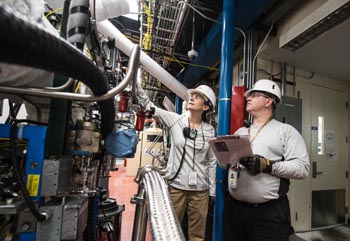 Maintenance is crucial for equipment with moving parts to prevent failure. Preventive maintenance is a proactive approach to asset maintenance that involves adjustments, lubrication, cleaning, repairs, and replacement of parts. It can reduce downtime, avoid surprise repairs, increase productivity, and extend the equipment’s economic/service life and resale value.
Maintenance is crucial for equipment with moving parts to prevent failure. Preventive maintenance is a proactive approach to asset maintenance that involves adjustments, lubrication, cleaning, repairs, and replacement of parts. It can reduce downtime, avoid surprise repairs, increase productivity, and extend the equipment’s economic/service life and resale value.
Although “If it’s not broken, don’t fix it” may seem like a reasonable approach, it can be more expensive in the long run. Reactive maintenance can cause productivity losses and incur high costs due to unplanned asset downtime or failure.
Preventive maintenance helps to identify issues before they escalate into larger, more expensive problems. However, it can be challenging to keep up with it due to various reasons, including:
Manufacturer recommendations vs. equipment use: Maintenance requirements may differ based on equipment use, and it’s necessary to check with the manufacturer’s recommendation first.
Scheduling conflicts: Difficulty in scheduling preventive maintenance tasks during periods of high equipment utilization or production, which can result in maintenance tasks being postponed or skipped altogether.
Service demands: Equipment may be required to be in operation, making it difficult to take it out of service for maintenance.
Various types of equipment: Keeping track of different maintenance intervals for different equipment types can be challenging.
Spare parts: Limited access to spare parts and materials needed for preventive maintenance tasks, which can lead to delays and difficulties in completing maintenance activities on schedule.
Operating environment: Equipment used in corrosive or abusive environments may require more frequent maintenance beyond preventive maintenance.
Lack of visibility into asset health and performance data: This can make it challenging to identify equipment that requires preventive maintenance and prioritize maintenance activities.
Effective Strategies for Preventive Maintenance
To ensure the longevity of your equipment and maintain its economic life, it is important to follow a scheduled preventive plan. This includes:
- Conducting regular inspections and following the recommended preventive maintenance procedures provided by the manufacturer.
- Retire old assets or pieces of equipment that have surpassed their economic value.
- Hire the right trained and qualified maintenance technicians for your equipment. This helps to ensure that maintenance tasks are performed correctly and efficiently.
- Avoid overworking your equipment beyond their working hours and refrain from using them in abusive environments that necessitate frequent maintenance schedules.
- Consider investing in advanced technology or software, such as computerized maintenance management system (CMMS) software, that can help you automate preventive maintenance processes and monitor your assets’ performance in real-time. For instance, some maintenance management software can help you schedule and assign preventive maintenance tasks, track asset usage and condition, generate reports, and send automated alerts when maintenance is due. Such software can help you streamline maintenance operations, reduce maintenance costs, and optimize asset performance.
- Regularly review your preventive maintenance program to ensure it is still effective and up-to-date. As your equipment ages or your operating environment changes, you may need to adjust your preventive maintenance program to ensure it remains relevant and effective. Regularly reviewing your program can help you identify gaps or areas for improvement and ensure that your assets are receiving the necessary maintenance to perform optimally.
- Educate your employees about the importance of preventive maintenance and their role in maintaining equipment. Providing your employees with training on how to use and maintain equipment safely and effectively can help reduce accidents, extend equipment lifespan, and optimize performance. Additionally, involving employees in the maintenance process can help promote a culture of care and responsibility for assets, which can lead to fewer breakdowns and more efficient maintenance practices.
- Regularly monitor and analyze maintenance data to identify trends, patterns, and areas for improvement. Analyzing maintenance data can help you identify recurring issues or potential problems, optimize maintenance schedules, and improve the overall effectiveness of your maintenance program. By using data-driven insights, you can make more informed decisions about preventive maintenance, reduce downtime, and improve asset performance.
Spare Parts Inventory Management
(TOP)
 Managing spare parts inventory can be a daunting task for businesses of all sizes. The challenge lies in striking the balance between having enough spare parts to keep equipment running efficiently and minimizing the cost of maintaining an inventory. Additionally, managing multiple types of equipment from different brands and models further complicates the process of sourcing, tracking, and ordering parts. Not having the right part when needed can cause costly downtime, resulting in lost productivity and revenue. Properly managing spare parts inventory is critical to ensuring equipment runs smoothly and avoiding costly disruptions.
Managing spare parts inventory can be a daunting task for businesses of all sizes. The challenge lies in striking the balance between having enough spare parts to keep equipment running efficiently and minimizing the cost of maintaining an inventory. Additionally, managing multiple types of equipment from different brands and models further complicates the process of sourcing, tracking, and ordering parts. Not having the right part when needed can cause costly downtime, resulting in lost productivity and revenue. Properly managing spare parts inventory is critical to ensuring equipment runs smoothly and avoiding costly disruptions.
Effective Strategies for Spare Parts Inventory Management
Effective strategies for spare parts inventory management can help reduce equipment downtime and increase operational efficiency. Here are some strategies that can help:
- Establish a standardized inventory system. This involves setting up a system for categorizing parts, such as by equipment type or manufacturer, and determining the appropriate minimum and maximum inventory levels for each category. By having standardized procedures in place, you can more easily track inventory levels, identify when parts need to be reordered, and avoid overstocking or understocking.
- Implement a just-in-time (JIT) inventory system. This involves ordering parts only when they are needed, rather than keeping a large inventory on hand. JIT inventory can reduce the costs associated with excess inventory, as well as the space needed for storage.
- Work with a parts vendor that handles various brands and models for both OEM and aftermarket parts. This will save you time and effort in sourcing parts from different vendors, especially if you have a diverse fleet of equipment.
- Keep accurate records of your equipment’s maintenance history and parts usage. This will help you determine which parts you need and how often you need them, as well as identify any trends in parts usage.
- Use preventive maintenance strategies to minimize unexpected breakdowns and equipment failures. Review the operator’s manuals for each piece of equipment and identify when parts need to be replaced. Source those parts in advance to avoid any last-minute scramble.
- Outsource parts sourcing to a reliable maintenance service provider. Having a partnership with a particular vendor can help you source parts quickly and efficiently without having to spend a lot of time, resources, and money.
- Conduct regular inventory audits to identify any obsolete or surplus parts that can be sold or disposed of. This will help you reduce excess inventory and optimize your spare parts management system.
- It’s also important to periodically review and update your inventory management strategies to ensure they remain effective. This may involve analyzing your usage and demand patterns, identifying parts that are frequently out of stock, or evaluating the performance of your parts vendor.
Maximizing Equipment Uptime & Reducing Downtime
(TOP)
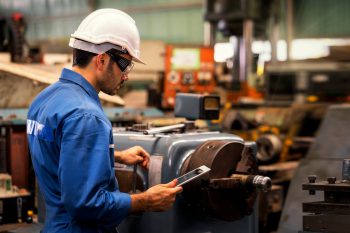 Downtime is a critical issue for businesses, as it can significantly impact productivity and profitability. When equipment failure is the cause of downtime, recovery can be a challenging task. That’s why minimizing downtime is crucial, particularly when it is unplanned.
Downtime is a critical issue for businesses, as it can significantly impact productivity and profitability. When equipment failure is the cause of downtime, recovery can be a challenging task. That’s why minimizing downtime is crucial, particularly when it is unplanned.
As everyone knows, downtime is the enemy of maintenance managers everywhere. There are two primary types of downtime: planned and unplanned. While planned downtime is often scheduled and expected, unplanned downtime can have severe consequences.
Therefore, it is essential to reduce the frequency of unplanned downtime by implementing preventive maintenance measures and promptly addressing any repairs to avoid production slowdowns. Delaying maintenance and repairs can cause equipment failure, leading to unplanned downtime that can significantly offset production gains.
For instance, imagine an operation that requires processing material within a specific time frame. If a forklift truck breaks down, it can severely reduce its ability to meet production requirements. However, continuing to use the forklift truck despite underlying issues can cause it to fail unexpectedly, resulting in unplanned downtime that could have been avoided.
Thus, striving to get equipment back up and running as soon as possible is critical. Failure to do so can lead to significant losses in productivity and profits.
Effective Strategies for Maximizing Equipment Uptime & Reducing Downtime
Maximizing equipment uptime and reducing downtime is crucial for any business that relies on machinery to keep its operations running smoothly. Downtime can lead to lost productivity, missed deadlines, and decreased profitability. Fortunately, there are several effective strategies that companies can employ to minimize equipment downtime. Fortunately, there are several strategies that can help you through this issue:
- Implement predictive maintenance practices and keep up with planned preventative maintenance. This involves regularly inspecting and repairing equipment to prevent potential breakdowns or failures. By addressing potential issues before they become major problems, businesses can reduce the likelihood of unexpected downtime and extend the lifespan of their equipment.
- Use predictive analysis tools to anticipate events such as equipment failures and transform unplanned downtime into planned downtime. These tools use data analysis and machine learning algorithms to identify patterns and trends in equipment performance, allowing businesses to predict and prepare for potential issues before they occur.
- Outsourcing maintenance services to third-party providers can also be beneficial, particularly when businesses do not have the in-house expertise or resources to keep up with maintenance demands. Outsourcing maintenance ensures that equipment is always well-maintained, reducing the risk of unplanned downtime and improving overall equipment reliability.
- Renting equipment like forklifts can also be helpful in minimizing the effects of planned or unplanned downtime. By having a backup plan in place, businesses can quickly resume operations and minimize the impact of any equipment-related issues.
- It’s essential to have a well-trained and knowledgeable team to operate and maintain equipment. This includes providing regular training and education on the latest equipment and maintenance techniques, as well as ensuring that team members are aware of best practices for minimizing downtime and maximizing uptime.
- Businesses should prioritize equipment reliability when selecting and purchasing new machinery. Choosing high-quality, reliable equipment that is well-suited to the business’s specific needs can help prevent breakdowns and other issues that lead to downtime.
- It’s important to establish clear communication channels and protocols for reporting and addressing equipment-related issues. Having a well-defined process for reporting equipment issues and a team dedicated to addressing them can help prevent minor problems from becoming major issues that result in unplanned downtime.
Maintaining Accurate Records
(TOP)
 Maintaining accurate equipment records by consistently collecting data is a critical and challenging aspect of maintenance. However, this can be easier said than done, some of the problems in maintenance record-keeping include:
Maintaining accurate equipment records by consistently collecting data is a critical and challenging aspect of maintenance. However, this can be easier said than done, some of the problems in maintenance record-keeping include:
- Poor record-keeping and lack of documentation can make it challenging to keep track of even a few pieces of equipment. This can obscure critical information such as the economic vs. useful life of equipment and forecasting parts. In turn, this can lead to excessive unplanned downtime and costly maintenance.
- Not having documented maintenance plans or instructions can create problems. For instance, if a technician who solved a maintenance issue in the past leaves the company without documenting the solution process, the problem may reoccur, and the team may have to start from scratch.
- Without proper documentation of maintenance tasks and their outcomes, it can be difficult to identify areas for improvement in your maintenance program. Accurate record-keeping allows you to analyze data and identify patterns, which can help you make informed decisions about optimizing your maintenance program.
- Without accurate record-keeping, it can be difficult to establish patterns, such as recurring equipment failures. This can result in a waste of time, money, and resources. Therefore, it is essential to maintain accurate and up-to-date records to ensure the longevity of equipment and reduce maintenance costs.
Effective Strategies for Maintaining Accurate Records
To prevent costly downtime events, maintaining detailed records of equipment maintenance activities is crucial. Here are some effective strategies for achieving this:
- Implement an equipment maintenance log: A log that documents all equipment maintenance activities, including the date, technician name, service provided, and brief work description. By tracking equipment maintenance history, potential problems can be identified and addressed before they escalate into costly downtime events.
- Utilize computerized maintenance management system (CMMS) software: Consider implementing a computerized maintenance management system (CMMS) software, which provides a centralized database for all maintenance records, including work orders, schedules, parts inventory, and more. This system can automate preventive maintenance tasks and alert maintenance teams when equipment needs servicing based on its usage and history, reducing the risk of unscheduled downtime. An established digital software system is a more efficient way to keep track of maintenance records, enabling you to easily search, analyze, and generate reports from your maintenance records to identify patterns and make more informed decisions.
- Conduct regular inspections: Regular inspections are essential for preventing downtime. By inspecting your equipment regularly, you can identify potential problems early and address them before they lead to downtime events. Be sure to keep a record of all inspections, including any issues that were identified and how they were addressed.
- Schedule preventative maintenance: Preventative maintenance is an important step in preventing downtime. By scheduling regular maintenance tasks, such as oil changes, filter replacements, and system checks, you can keep your equipment running smoothly and reduce the risk of unexpected downtime.
Minimizing Equipment Damage
(TOP)
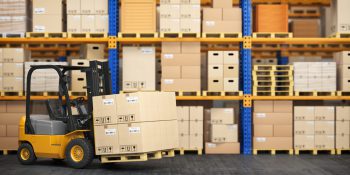 Equipment damage can lead to expensive repairs and poses a significant risk of injury to operators and ground personnel. Damage is one of the leading causes of equipment failure, and it can stem from various sources. Some examples of equipment damage include:
Equipment damage can lead to expensive repairs and poses a significant risk of injury to operators and ground personnel. Damage is one of the leading causes of equipment failure, and it can stem from various sources. Some examples of equipment damage include:
- An old forklift with a missing tire left sitting on blocks in a yard, can lead to further damage and pose a safety hazard.
- Equipment that operates in rough work environments with lots of debris or harsh conditions, can cause damage over time.
- Workers who are rushed, poorly trained, or simply careless in equipment operation, can lead to accidents and damage to equipment.
- Equipment that is not well-maintained, leading to wear and tear that can cause equipment failure.
- Overloading or misuse of equipment beyond its capacity or intended use
- Environmental factors such as extreme temperatures or exposure to corrosive substances
- Accidents or collisions caused by operator error, such as driving at high speeds or not paying attention to surroundings
- Age or outdated equipment that may be more prone to failure or damage
- Improper storage or handling of equipment, such as leaving it exposed to the elements or failing to secure it properly during transport or storage.
Effective Strategies for Minimizing Equipment Damage
Effective management of equipment damage is critical for any business that relies on machinery or vehicles to get work done. Here are some effective strategies for managing equipment damage:
- Operate equipment within its design limits: Pushing equipment beyond its limits can lead to equipment damage and injury. Ensure that operators understand the equipment’s capacity and avoid exceeding it.
- Stick to the normal operation schedule: Avoid completing tasks outside the normal operation schedule, unless it’s an emergency. Following the right procedures during an emergency can help prevent equipment damage.
- Involve qualified personnel: Ensure that only qualified technicians operate machinery or undertake inspection and maintenance procedures.
- Improve operator safety training: Enhance operator training to reduce accidents in the workplace.
- Keep down the speed in the operating environment: You can use speed-limiting devices on machinery or install radar systems to detect speed and prevent collisions.
- Install equipment monitoring and accountability systems: Install systems that tie operators to their equipment, allowing for easier identification of equipment damage causes.
- Implement maintenance troubleshooting techniques: In case of equipment damage, employ maintenance troubleshooting techniques to determine the root cause of the damage and prevent it from happening again.
- Conduct regular inspections: Regular inspections of equipment can help identify potential problems before they become more significant issues.
Specialized Equipment
(TOP)
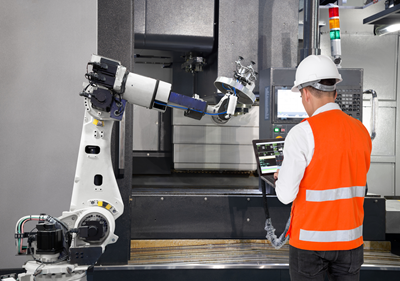 Specialized knowledge of electricity, mechanics, and hydraulics is crucial for ensuring the proper functioning of electrical systems, mechanical systems, and hydraulic systems, respectively. A maintenance team might be tasked with dealing with all these systems and more complex operations. However, it is rare for one person to have all the expertise required to handle each system effectively.
Specialized knowledge of electricity, mechanics, and hydraulics is crucial for ensuring the proper functioning of electrical systems, mechanical systems, and hydraulic systems, respectively. A maintenance team might be tasked with dealing with all these systems and more complex operations. However, it is rare for one person to have all the expertise required to handle each system effectively.
For instance, a forklift requires knowledge of different systems such as hydraulics, electrical, and mechanical. The hydraulic system of a forklift is responsible for lifting and lowering the forks, while electric forklifts are powered by a battery, controllers, and drive motors. Additionally, forklifts are mechanical objects that have wheel bearings, axles, and linkages. All of these systems require specialized knowledge for proper maintenance.
Even with a well-trained operations team, it is unlikely that one person will possess all the expertise required to handle complex equipment maintenance issues. Therefore, in the case of equipment downtime, multiple individuals with different technical backgrounds may have to work together to solve problems, which can be time-consuming and lead to increased equipment downtime. It is crucial to have a team of experts with diverse knowledge bases to minimize downtime and maintain equipment efficiently.
Effective Strategies for Specialized Equipment Management
Implement Preventive Maintenance: Preventive maintenance is a proactive approach to equipment maintenance that involves regularly scheduled inspections, cleaning, and repairs. This strategy helps identify issues before they turn into costly repairs, minimize downtime, and extend the life of specialized equipment.
Invest in Training: It’s essential to invest in training for employees who operate and maintain specialized equipment. The training can be provided by equipment manufacturers or specialized training institutions. With proper training, employees can acquire the necessary skills and knowledge to perform maintenance and repair tasks effectively, reducing the need for outsourcing or hiring specialists.
Use Technology: Technology can assist in maintaining and monitoring specialized equipment. For example, sensors and other monitoring devices can detect potential issues and notify maintenance teams before they turn into equipment failures. Additionally, computerized maintenance management systems (CMMS) software can help track maintenance schedules, work orders, and inventory levels.
Consider Equipment Rental: For businesses with occasional or short-term equipment needs, renting specialized equipment may be a cost-effective solution. Equipment rental companies typically provide maintenance and repair services for their equipment, minimizing the need for in-house maintenance or outsourcing to specialists.
Have a Backup Plan: Even with preventive maintenance and regular inspections, equipment failures can still occur. Having a contingency plan in place, such as backup equipment or contingency maintenance agreements, can help minimize downtime and keep operations running smoothly.
Safety Management
(TOP)
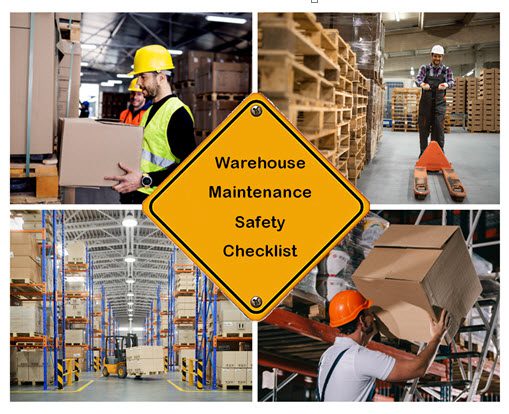 Maintenance workers face greater safety risks than office workers due to their work with dangerous equipment on a daily basis. Employers have a legal and ethical obligation to provide a safe working environment for their employees and comply with OSHA’s safety standards. However, there are several challenges in maintaining safety standards, including:
Maintenance workers face greater safety risks than office workers due to their work with dangerous equipment on a daily basis. Employers have a legal and ethical obligation to provide a safe working environment for their employees and comply with OSHA’s safety standards. However, there are several challenges in maintaining safety standards, including:
Cost and availability of PPE: Ensuring that workers wear the appropriate personal protective equipment (PPE) can be difficult and costly, especially when specialized maintenance PPE is required.
Failure to follow safety procedures: Common hazards such as falls and failure to properly implement lock-out/tag-out (LOTO) procedures to protect against injury from energized equipment can occur due to a lack of adherence to safety processes.
Inadequate safety training: Lack of regular safety training can leave workers unprepared to guard against hazards and improve safety, leading to a higher risk of accidents and injuries.
Lack of communication or clear instructions about safety protocols. Workers may not understand what is expected of them when it comes to safety, or they may receive conflicting information.
Inadequate maintenance of equipment or facilities. Equipment that is not properly maintained can become a hazard, and facilities that are not kept clean and organized can create tripping or slipping hazards.
Resistance to change or lack of buy-in from workers. When new safety protocols or equipment are introduced, workers may resist or be slow to adopt them, which can create safety risks.
Pressure to prioritize productivity over safety. Workers may feel pressure to cut corners or take risks in order to meet production quotas, which can lead to accidents and injuries.
Lack of resources for safety programs. Employers may not provide enough funding or resources for safety programs, such as hiring dedicated safety personnel or providing regular safety training.
Safety hazards when working on specialized equipment. Specialized equipment often requires specialized knowledge and training to work on, and failure to properly maintain and operate this equipment can lead to serious injury or even death.
Effective Strategies for Safety Management
Prioritize safety across the nusiness: Ensure that safety is a top priority across all aspects of the organization, from leadership to frontline workers.
Provide appropriate safety equipment: Ensure that all workers have access to the appropriate personal protective equipment (PPE) for their specific work environments.
Regular safety training and education: Implement regular safety training and education programs to ensure that all workers are equipped with the knowledge and skills to recognize and avoid potential safety hazards.
Focus on material handling safety: Provide specialized training for material handling equipment operation and safety, and ensure that all workers are aware of the risks associated with these tasks.
Manage worker stress and fatigue: Provide workers with scheduled rest breaks to help reduce stress and fatigue, and ensure that all workers take necessary safety precautions when changing forklift propane tanks.
Mitigate electrical hazards: Ensure that all power supply systems are grounded, maintain sufficient clearance in front of electrical panels, and place warning signs near electrical systems to alert workers to potential hazards.
Have an emergency plan in place: Develop and implement a comprehensive facility emergency plan that outlines how to respond to emergencies and includes clear exit options for workers.
Train workers to respond to emergencies: Recruit and train emergency responders from among the workers to help respond quickly and effectively in the event of an emergency.
Enforce safety procedures: Develop and enforce safety procedures for all operations, including material handling and machinery use. Ensure that workers follow safety procedures at all times.
Regularly inspect equipment and machinery: Regularly inspect all equipment and machinery to identify potential safety hazards. Repair or replace any equipment that is not functioning correctly or safely.
Encourage worker input: Encourage workers to provide input on safety procedures and hazard identification. This can help identify potential safety hazards that may have been overlooked.
Invest in safety technology: Invest in safety technology, such as safety sensors and monitoring systems, to enhance safety and prevent accidents.
Encourage workers to report safety concerns: Create a culture of safety where workers feel comfortable reporting safety concerns and hazards to their supervisors or safety committee.
Data Security
(TOP)
 Data security is an increasingly important issue in today’s digital age. With the vast amount of personal and sensitive information that is collected and stored online, there is a growing need to protect this data from cyber threats such as hacking, data breaches, and identity theft. Data security issues can arise from a variety of sources, including human error, software vulnerabilities, and malicious attacks. Some common data security measures include encryption, firewalls, access controls, and regular backups. However, as technology continues to evolve, so do the threats to data security, making it an ongoing challenge to stay ahead of potential risks and ensure that sensitive information remains protected. It is important for individuals and organizations to be proactive in implementing strong data security practices to safeguard their information and avoid potential financial, legal, and reputational consequences.
Data security is an increasingly important issue in today’s digital age. With the vast amount of personal and sensitive information that is collected and stored online, there is a growing need to protect this data from cyber threats such as hacking, data breaches, and identity theft. Data security issues can arise from a variety of sources, including human error, software vulnerabilities, and malicious attacks. Some common data security measures include encryption, firewalls, access controls, and regular backups. However, as technology continues to evolve, so do the threats to data security, making it an ongoing challenge to stay ahead of potential risks and ensure that sensitive information remains protected. It is important for individuals and organizations to be proactive in implementing strong data security practices to safeguard their information and avoid potential financial, legal, and reputational consequences.
Effective Strategies for Data Security
Cybersecurity has now become a daily word in every industry. With ransomware attacks maintenance and reliability teams throughout all facilities, organizations need to assess their level of cyber risk and put plans in place to make sure that their CMMS data is protected.
Vendors say they have a secure network, but do they really? Today, there are companies that specialize in analyzing vendor networks to ensure that their data is secure. These vendors provide “Security Scorecards” rating them on their security in various categories. A vendor with a poor cybersecurity score can open the doors to security breaches and bring your business to a halt.
Companies with a C or below are 5X more likely to be breached. Unfortunately, most of our direct competitors are only able to maintain a level B or C.
At eWorkorders, we take security seriously and have implemented an aggressive Cybersecurity Program. We have utilized a third party, SecuirtyScorecard to analyze and continuously rate how well-prepared we are at preventing cyber-attacks. To learn more about our program and see our “A” ratings in every category, visit our web page.
Streamlining Maintenance Management
(TOP)
Computerized Maintenance Management System (CMMS) software can be a valuable solution for organizations looking to improve their maintenance operations and enhance safety management. With the ability to schedule and track safety-related maintenance tasks, store critical safety information, and automate safety-related processes, maintenance management software can help organizations proactively identify and mitigate safety risks, ultimately reducing accidents and equipment downtime. Implementing a maintenance management system can also provide a centralized location for all maintenance-related data, simplifying data management and increasing productivity. By utilizing this technology, organizations can streamline their maintenance operations, improve safety compliance, and ultimately improve their bottom line.
Note: This article has presented some common issues that organizations encounter in their daily operations, along with suggested solutions. It is important to note that the issues faced by organizations may vary depending on various factors such as industry, company size, and employee dynamics. However, by identifying the root causes of these issues and implementing appropriate solutions, organizations can easily address them and prevent them from recurring in the future. With a proactive approach towards problem-solving and the use of suitable management tools and techniques, organizations can streamline their operations, enhance productivity, and ultimately achieve their goals.
Other Resources
eWorkOrders Maintenance Checklist Library
The Ultimate Warehouse Safety Checklist
Conveyor Belt Maintenance Checklist – Things You Shouldn’t Forget
Common Forklift Problems & How To Avoid Them
